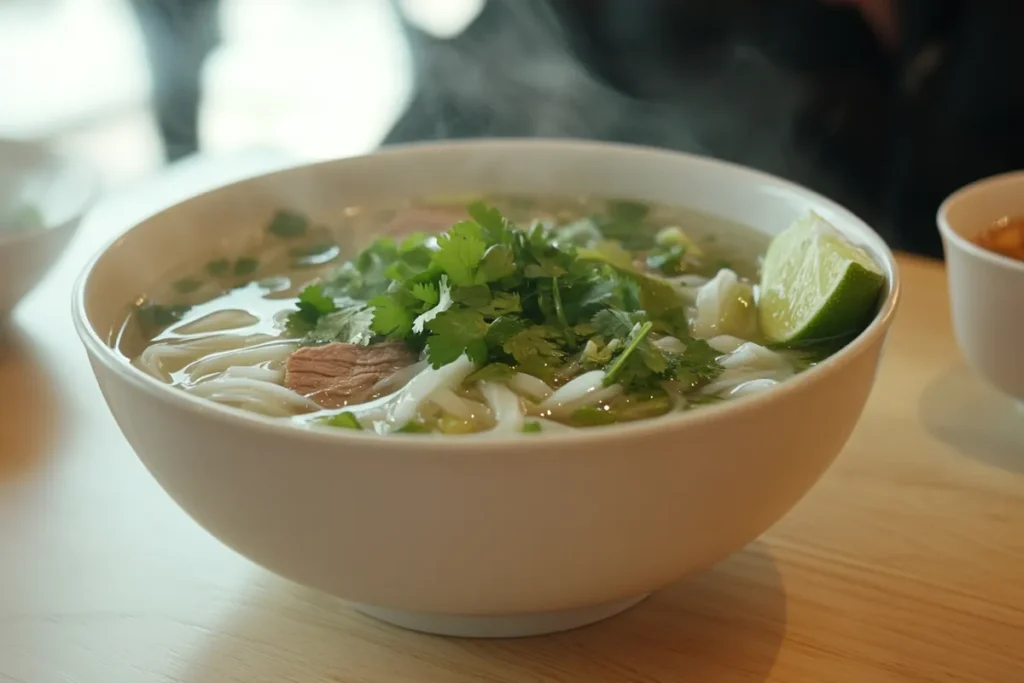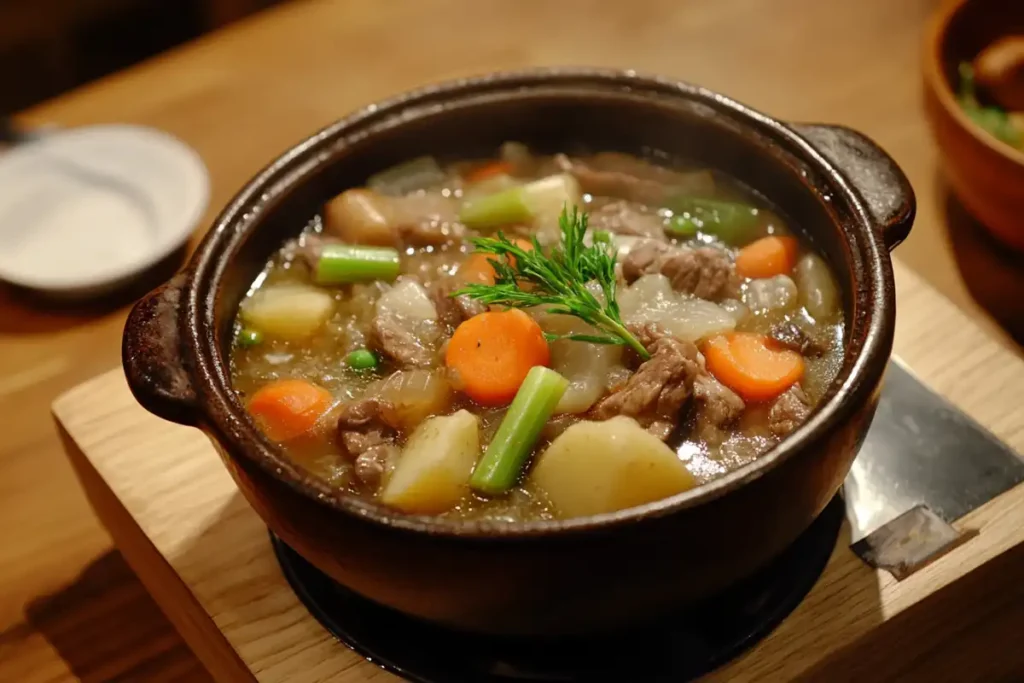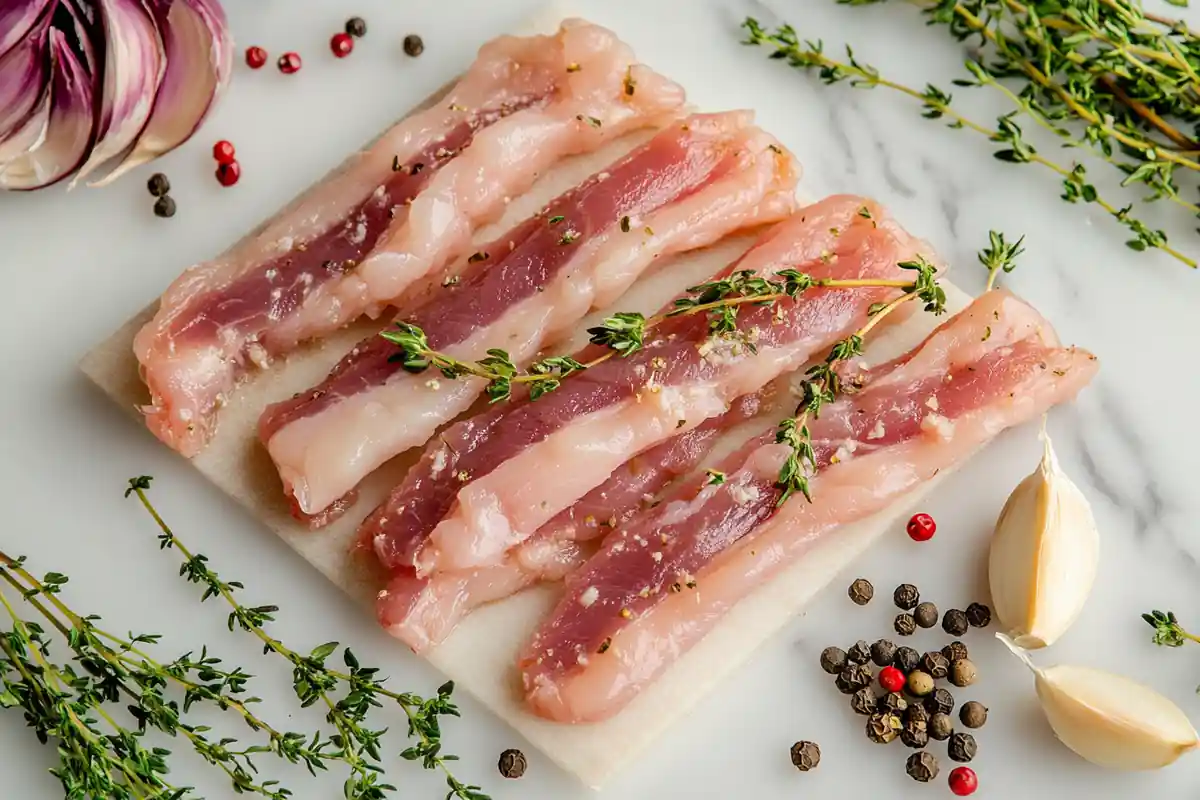Introduction
What cut of meat is beef tendon? Often overlooked in favor of more popular cuts, beef tendon is a hidden gem in the culinary world. Known for its gelatinous texture and impressive nutritional benefits, this unique cut plays a key role in many traditional dishes around the globe. In this guide, we’ll dive into everything you need to know about beef tendon—where it comes from on the cow, how it’s prepared, and its cultural significance. Whether you’re curious about its use in a classic bowl of pho or looking to add it to your own recipes, this article has you covered.
Understanding Beef Tendon
What is a Beef Tendon?
A beef tendon is a fibrous connective tissue that attaches muscle to bone in cattle. Unlike muscle cuts, tendons are denser and have a unique texture, resembling strands of glossy packing tape. They play a vital role in movement, providing both flexibility and strength to the cow’s anatomy.
Tendons are primarily composed of collagen, which transforms into gelatin when cooked. This makes them highly prized in dishes requiring a chewy, gelatinous texture. While not as mainstream as ribeye or sirloin, beef tendon is gaining popularity for its health benefits and culinary versatility.
Where is Beef Tendon Found on the Cow?
Beef tendons are located in areas where the cow’s muscles experience the most strain, typically near the legs and shanks. These regions bear significant weight and require strong, durable tendons to support movement.
The two most common tendons used in cooking are:
- Achilles Tendon: Found at the rear legs and known for its thick, robust structure.
- Foreleg Tendon: Located in the front limbs, slightly thinner but equally rich in collagen.
While beef tendon isn’t considered a traditional “cut” like brisket or flank, it’s often trimmed from these areas and sold separately, either whole or pre-cut.
Beef tendon may not have the marbling of a ribeye or the tenderness of filet mignon, but it has a charm of its own. From its unique texture to its nutrient-packed composition, this overlooked part of the cow deserves more recognition in the culinary world.
Culinary Uses of Beef Tendon
Traditional Dishes Using Beef Tendon

Beef tendon holds a special place in many cuisines, particularly in Asian cooking. From hearty broths to flavorful stir-fries, this cut transforms dishes with its unique texture and ability to absorb spices. One classic example is Pho, a Vietnamese noodle soup that often features tender, slow-cooked tendon alongside brisket and rare beef slices.
In Chinese cuisine, beef tendon appears in dishes like dim sum or spicy Sichuan hotpots. Braised tendon, cooked with soy sauce, star anise, and cinnamon, is a beloved delicacy. Meanwhile, Japanese cuisine uses it in dishes such as gyusuji nikomi, a comforting stew of tendon and vegetables.
Western culinary traditions also make use of beef tendon, albeit less commonly. It’s often incorporated into rich broths or slow-cooked soups, where it dissolves to add a silky texture.
Preparation Methods for Beef Tendon
Cooking beef tendon requires patience. Its tough structure demands long, slow cooking to unlock its potential. Here are some common methods:
- Boiling: A simple approach, boiling softens the tendon while preserving its gelatinous quality.
- Braising: This method enhances flavor by cooking the tendon in seasoned liquid for hours. Spices like cloves and garlic can elevate the dish.
- Sous-Vide: A modern technique, sous-vide ensures even cooking at precise temperatures, making the tendon incredibly tender.
Before cooking, it’s essential to clean the tendon thoroughly, removing any residual fat or connective tissue. Some recipes suggest blanching to rid the tendon of impurities.
For further inspiration on using beef tendon in recipes, explore Zinas Beef Tendon Recipes, which provide creative ideas for incorporating this cut into meals.
Nutritional Profile and Benefits
Health Benefits of Beef Tendon
Beef tendon is more than just a culinary delight; it’s a powerhouse of nutrients. Rich in collagen, it supports joint health, skin elasticity, and overall vitality. Collagen, the protein responsible for tendon’s texture, is also linked to reducing signs of aging and improving bone strength.
Tendon is also a lean source of protein, making it a great choice for those looking to maintain muscle mass while keeping their diet low in fat. Its low calorie content is another perk, appealing to those pursuing weight management.
Nutritional Composition of Beef Tendon
The nutrient profile of beef tendon includes:
- Protein: A substantial amount, essential for repair and growth.
- Collagen: Promotes skin health and reduces joint pain.
- Micronutrients: Trace amounts of iron, magnesium, and calcium.
However, it’s low in carbs and fats, making it a versatile ingredient for various dietary plans. When prepared in a broth or stew, it enhances the dish’s nutritional value with its gelatin-rich consistency.
With its combination of flavor, texture, and health benefits, beef tendon stands out as a cut worth adding to your menu. Curious about creative recipes? Learn more at Zinas Recipe Ideas.
Purchasing and Storing Beef Tendon
How to Select Quality Beef Tendon
When shopping for beef tendon, look for pieces that are firm, smooth, and free from discoloration. Fresh tendons should have a pearly-white appearance and no strong odor. If you’re buying frozen tendons, ensure they are well-sealed and not covered in excess frost, as this may indicate freezer burn.
Many butchers and Asian markets carry beef tendon. If you’re unsure where to start, ask the butcher for tendon trimmed from the shank or Achilles area. These tendons are known for their dense structure and high collagen content, making them ideal for cooking.
Storage Tips for Beef Tendon
Proper storage is essential to maintain the quality of beef tendon. Here are a few tips:
- Refrigeration: If using within a day or two, store fresh tendon in the fridge, wrapped tightly in plastic or placed in an airtight container.
- Freezing: Tendons freeze well and can be stored for up to six months. Before freezing, blanch the tendons to reduce moisture and prevent freezer burn.
- Thawing: Always thaw frozen tendons in the refrigerator overnight to preserve their texture and avoid bacterial growth.
For more storage tips or to learn about preserving similar ingredients, explore Zinas Guide to Ingredient Storage.
FAQs About Beef Tendon
Is Beef Tendon Healthy?
Yes! Beef tendon is an excellent source of collagen, a protein that benefits skin, joints, and bones. It’s also low in fat and calories, making it a healthy addition to soups and stews.
Can Beef Tendon Be Eaten Raw?
No, beef tendon must be cooked thoroughly to break down its tough fibers. Cooking also enhances its gelatinous texture and makes it safe to eat.
How Long Does It Take to Cook Beef Tendon?
Cooking time varies depending on the method. Boiling or braising tendons typically takes 2–3 hours, while sous-vide cooking can take up to 12 hours for optimal tenderness.
What Does Beef Tendon Taste Like?
Beef tendon has a mild, neutral flavor that easily absorbs the seasonings and spices it’s cooked with. Its appeal lies in its texture, which is chewy and gelatinous when prepared correctly.
For more recipes that highlight this versatile cut, check out other ideas at Zinas Recipes
*Beef Tendon in Cultural Contexts
Beef Tendon Across Different Cultures
Beef tendon is a treasured ingredient in cuisines across the globe, particularly in Asia. In Vietnam, beef tendon is a signature addition to pho, adding a chewy, gelatinous texture that contrasts beautifully with the tender noodles and broth. Similarly, in China, braised beef tendon with soy sauce and spices is a comforting dish often enjoyed during family meals or festive occasions.
In Japan, beef tendon is featured in dishes like gyusuji nikomi, where it’s simmered with miso and sake for hours to achieve melt-in-your-mouth softness. Thai cuisine incorporates beef tendon into spicy curries and soups, creating a delightful combination of flavors and textures.
Even outside of Asia, chefs are exploring the versatility of beef tendon. In some parts of Europe, tendon is used in hearty broths or as a natural thickener for soups and stews. These dishes demonstrate how a cut of meat like beef tendon, once considered less desirable, is becoming a culinary highlight.
Modern Adaptations of Beef Tendon Recipes
Modern chefs are reimagining how to use beef tendon in innovative ways. From crispy fried tendon chips to beef tendon tacos, this versatile ingredient is breaking into contemporary fusion cuisine. It’s even being used in upscale restaurants as a centerpiece, paired with ingredients like truffle oil and microgreens.
For those who enjoy experimenting with food, beef tendon offers endless possibilities. Its mild flavor and unique texture make it a blank canvas for bold seasonings and creative presentations.
The question What cut of meat is beef tendon? becomes more intriguing when you consider its evolution from a humble ingredient to a culinary star in both traditional and modern cooking.
Cooking Techniques for Beef Tendon
Slow Cooking for Tender Results

One of the most popular ways to prepare beef tendon is through slow cooking. This method breaks down the tough collagen fibers, resulting in a soft, gelatinous texture. Slow cooking is particularly effective for dishes like beef tendon stew or soups, where the tendon absorbs the surrounding flavors.
To slow-cook beef tendon:
- Begin by blanching the tendon in boiling water to remove impurities.
- Place the tendons in a slow cooker with broth, aromatics, and your choice of seasonings.
- Cook on low heat for 6–8 hours, or until the tendon is tender and translucent.
This method highlights why chefs often say, “Patience is the secret to unlocking the magic of beef tendon.”
Quick Braising for Flavorful Dishes
For a faster method, braising is an excellent choice. This technique uses high heat and a flavorful liquid, like soy sauce or wine, to create rich, savory dishes. Braising tenderizes the tendon while infusing it with bold spices.
Steps for braising:
- Sear the tendons briefly in a hot pan to lock in flavor.
- Add liquid, spices, and vegetables, then simmer for 2–3 hours.
- Finish by reducing the sauce to enhance the dish’s flavor.
If you’re still wondering, What cut of meat is beef tendon?, braising showcases how this cut transforms from tough to tender, elevating its culinary potential.
Incorporating Beef Tendon into Everyday Recipes
Easy Weeknight Meals with Beef Tendon
Incorporating beef tendon into your weeknight meals is easier than it seems. Once cooked, tendon can be sliced thinly and added to salads, noodles, or rice bowls. Its mild flavor makes it a perfect addition to stir-fries, where it pairs well with crisp vegetables and tangy sauces.
For a quick idea:
- Toss sliced beef tendon into a bowl of hot ramen, topped with a soft-boiled egg and fresh scallions.
- Add it to fried rice for a unique twist that boosts protein and texture.
Elevating Classic Dishes with Beef Tendon
Beef tendon can also take classic dishes to the next level. Swap traditional proteins for tendon in recipes like tacos or wraps. Its gelatinous texture creates a unique mouthfeel that complements crunchy toppings and creamy sauces.
For a fusion-inspired dish, try beef tendon in a taco filled with pickled vegetables and spicy mayo. This creative spin proves that beef tendon isn’t just an ingredient—it’s a conversation starter.
The question What cut of meat is beef tendon? becomes clear when you see its versatility in both traditional and modern cooking. From soups to tacos, beef tendon is a hidden gem ready to shine in your kitchen.
Common Questions and “People Also Ask”
What Part of the Animal is the Tendon?
Beef tendon is a connective tissue that attaches muscles to bones. Found primarily in the cow’s legs, it’s often trimmed from areas like the shank or Achilles.
What is the Nutritional Value of Tendons?
Tendons are packed with collagen and protein, making them a health-conscious choice. They’re also low in fat and calories, making them ideal for balanced diets.
How Do You Cook Tendons for Broth?
To make broth with beef tendon, simmer it in water for 4–6 hours with aromatics like garlic, ginger, and onion. This process extracts collagen, creating a rich, flavorful broth that’s perfect for soups or sipping.
Is Tendon Considered Red Meat?
While tendons come from beef, they are more of a connective tissue than muscle meat. This makes them unique compared to traditional red meat cuts like ribeye or brisket.
Beef tendon is a versatile and nutritious ingredient that deserves a place in your kitchen. For more ideas and cooking inspiration, explore additional recipes at Zinas Recipes.

